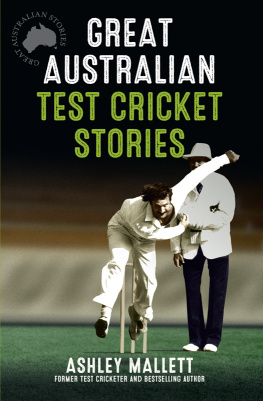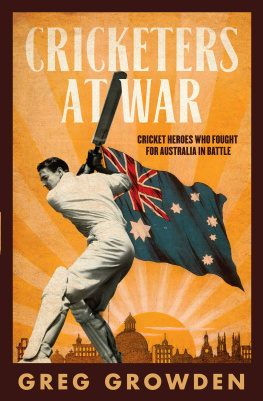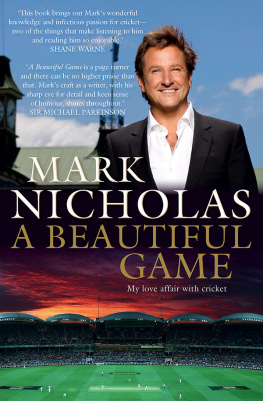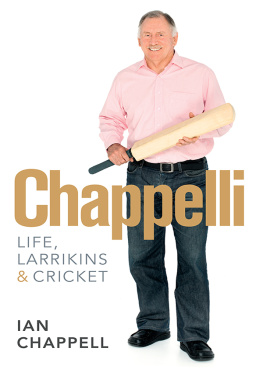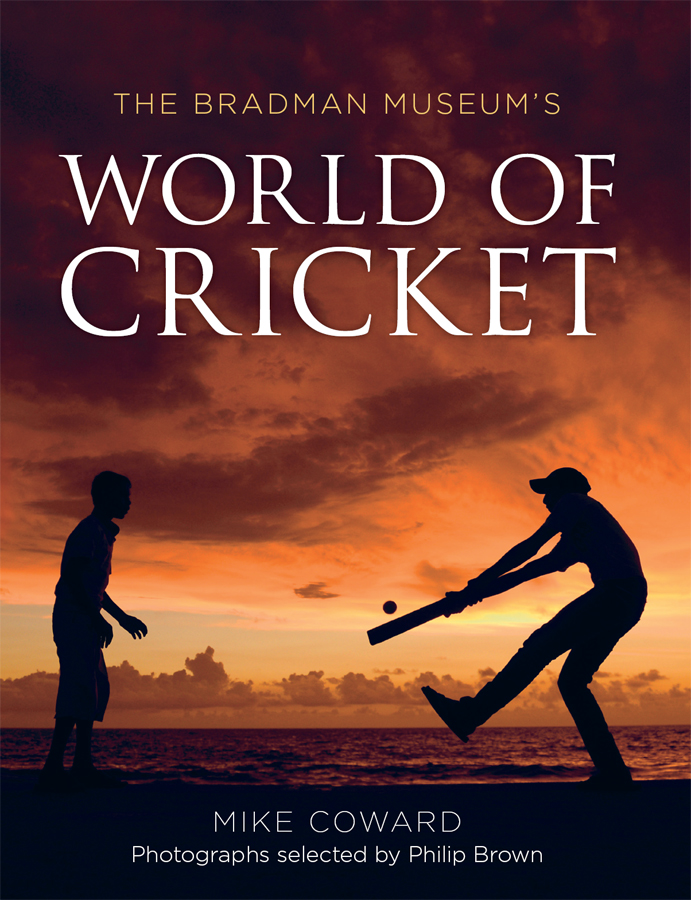
During the 2014-15 season Australia stages the eleventh ICC World Cup of Cricket, with fourteen nations competing in 49 fifty-over matches. At the same time the Bradman Museum, a monument to the greatest cricketer of all time, celebrates its 25th anniversary.
To mark that milestone at a time when the eyes of the cricketing world will be on Australia, this book reveals for the first time in print the founding treasure of the Bradman Museum: the Dons personal collection of 35-mm slides. With Bradmans typed commentary and handwritten amendments alongside, the slides showcase the history of cricket, from its agrarian beginnings in England to its status as a game of Empire, fit for introduction to the colonies. Grace, Hobbs, Hendren, Larwood, OReilly, McCabe, Lindwall, Truemanon these legends and many more Bradman gives us his opinion with characteristic directness. We gain insight into the game as he saw it in all its magic.
While Bradmans personal slide collection forms the centrepiece of this stunning collection, the work of three of crickets greatest photographers is also featured. Among Bruce Postles black and white photos from the 1960s and 70s are iconic shots that will thrill any cricket lover. Vivian Jenkins photos bring to life the drama of the 1970s and World Series Cricket, while Philip Browns camera ranges across international cricket throughout the world up to the present day.
This treasure trove of cricket is woven seamlessly together by the matchless commentary of Mike Coward, one of Australian crickets most acclaimed experts.
Cricket changed irrevocably in 1971 as a consequence of the persistent and heavy rains that ushered in the New Year in Melbourne. As no play was possible in the scheduled Third Ashes Test, the games governors decided to program the first limited-overs international at the Melbourne Cricket Ground on 5 January. Australia won the 40-over match by five wickets. (Bruce Postle)
Contents
Sliding Through History
by David Wells, oam , Curator, Bradman Museum
Foreword
This book celebrates the art of cricket photography. Sofor a fleeting moment, as long as it might take a Mitchell Johnson missile to startle Alastair Cookimagine yourself in the space of the cricket photographer.
Finger on the button...
Let your mind drift a little... perhaps seeking out a nostalgic cricketing moment, of which there are many, though posterity invites you to look favourably on a glorious Ashes battle. Your choice falls on Steve Waugh, local hero, at stance, Sydney Cricket Ground, New Years Test of 2003, score on 98, awaiting the last ball of the day which he... cover drives for four.
John Benaud (right), a former director of the Bradman Foundation, with his elder brother, Richie, the 28th Australian captain, and patron of the Bradman Foundation. (Bradman Museum Collection)
Click!
Such joy. As the crowd erupts you have captured a timeless moment in crickets history. Waugh is king, his 29 hundreds the equal of Don Bradman. Your photograph tells the story.
But do not think such joy is the constant companion of the cricket photographer. Sit instead for a daymake that twoat Brisbanes Gabba. The year is 1958, December, the First Test. Heat oppressive, humidity stifling, breeze missing, England batting. Mostly its Trevor Bailey. Makes 68 runs. Scores them over two days. In seven and a half hours he hits... four boundaries.
So tedious. A newspaper headline writer unsurprisingly called that match The Battle of the Snooze. Confronted by this still life in an action format how will you define 458 minutes of boredom? Even the good riddance photoa trundler from Ken Mackay nudging Baileys stumpsis meaningless. You have to wait another day for your moment, a tall, dark, handsome and young Norman ONeill, the new Australian hero, striding off the Gabba on the last afternoon, worshipped by a throng of jubilant fans, his unconquered innings of 71 signalling the arrival of Richie Benauds winning era.
Stamina, concentration and patience are as much in a photographers DNA as a players. Focus, as it is for the player, is everything for the photographer. Physically theirs is a ringside seat at the fight; mentally, though, they have to be in the ring, getting a feel for the play.
Cricket photography is not just aim and fire. In the same way a player might anticipate a tactic, so the photographer must try to anticipate the moment the tactic works. A photo has to project personality, reflect drama, in its own way tell the story of the contest. Cricket and its depiction have evolved over time: Tests to Twenty20, creams to vibrant coloured uniforms, day-only to day-night. Once, tight budgets made the photographer count his rolls of film like a strike-farming batsman counts balls. Digital is more generous.
In 2015 we acknowledge two major cricketing events: the eleventh staging of the World Cup, fourteen nations engaged in 49 matches of 50-over sizzle; and, celebrating its first 25 years, the Bradman Museum, a monument to the greatest Test cricketer of all time, and to the magic of cricket and all its uncertainty.
The games eras, glorious and grim, are defined by particular events and individuals. Such moments in time, now or then, are most clearly remembered through the lens of the cricket photographer. In the following pages, closely examine the images by Bruce Postle, Viv Jenkins, Philip Brown. At the same time, reflect on the Bradman Museums founding treasure, the Dons personal collection of historic 35 mm slides. Some simply illustrate the games finer points, others remind us of its history, but above all they offer us a unique insight into the mind of the man whose name lives on as the most significant contributor to the greatest game of all.
JOHN BENAUD
Introduction
In 1989 the Boy from Bowral, Sir Donald Bradman, supported the establishment of a museum in his home town that would bear his name and become a repository of historic significance for crickets most cherished memories. His vision was a collection that would be a resource to honour and strengthen the game rather than a shrine to his life and achievements.
Donors are the backbone of any museum collection and the Bradman Museum is no different. From the beginning Sir Donald himself donated unique and important items to strengthen and enrich the collection and pay tribute to the great game. These donations have enabled the museum to interpret the game of cricket for future generations, particularly Sir Donalds achievements and values, and to honour his name, which is synonymous with the spirit of the game. The Bradman Museum pays homage to Bradmans childhood and early cricket memories by maintaining the stories associated with every item the iconic cricketer donated.
One of the museums most significant objects is Bradmans very first bat, which can be found in the Bradman Gallery. In 1930 Bradman said: It was about this time that I came into possession of a real bat. And I was now the happiest boy ever. It was given to me by a Mr Cupitt, a member of the Bowral Town team. It was mans size, but that did not matter... With a saw my father cut three inches off the bottom, and rounded it off at the foot, and I went into the paddock with my prized possession.



